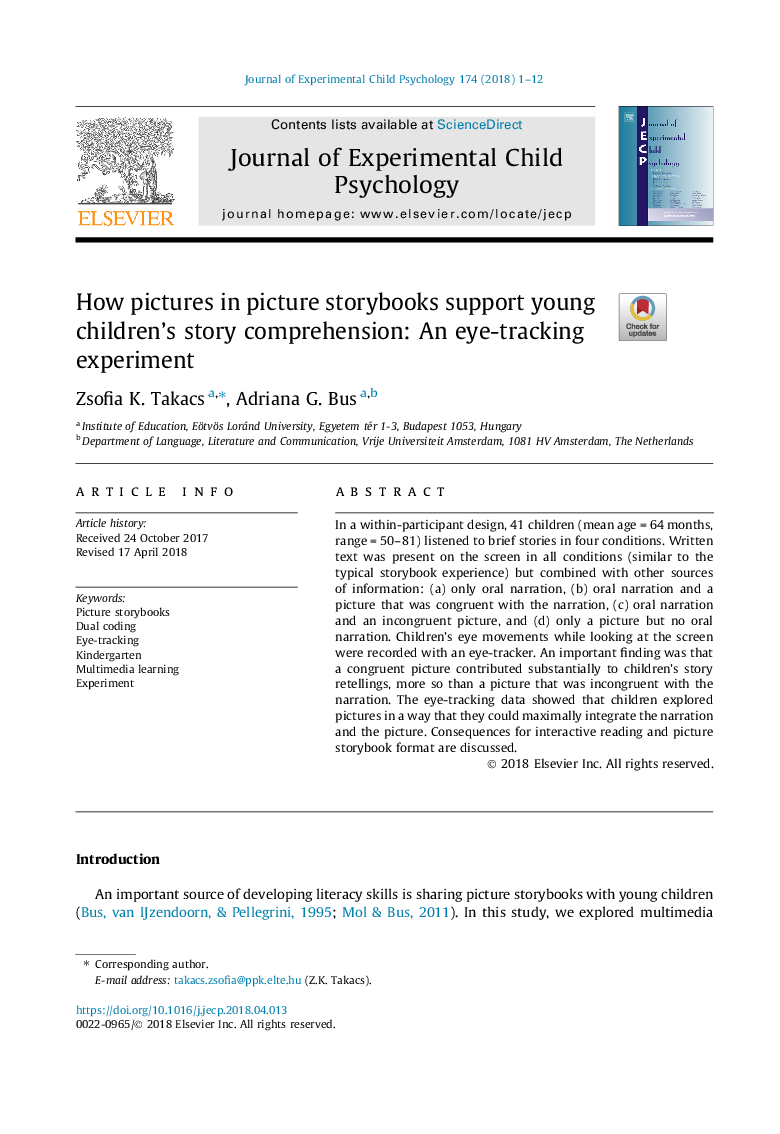| Article ID | Journal | Published Year | Pages | File Type |
|---|---|---|---|---|
| 7273683 | Journal of Experimental Child Psychology | 2018 | 12 Pages |
Abstract
In a within-participant design, 41 children (mean ageâ¯=â¯64â¯months, rangeâ¯=â¯50-81) listened to brief stories in four conditions. Written text was present on the screen in all conditions (similar to the typical storybook experience) but combined with other sources of information: (a) only oral narration, (b) oral narration and a picture that was congruent with the narration, (c) oral narration and an incongruent picture, and (d) only a picture but no oral narration. Children's eye movements while looking at the screen were recorded with an eye-tracker. An important finding was that a congruent picture contributed substantially to children's story retellings, more so than a picture that was incongruent with the narration. The eye-tracking data showed that children explored pictures in a way that they could maximally integrate the narration and the picture. Consequences for interactive reading and picture storybook format are discussed.
Related Topics
Social Sciences and Humanities
Psychology
Developmental and Educational Psychology
Authors
Zsofia K. Takacs, Adriana G. Bus,
